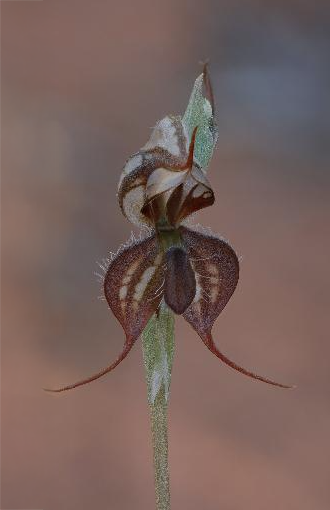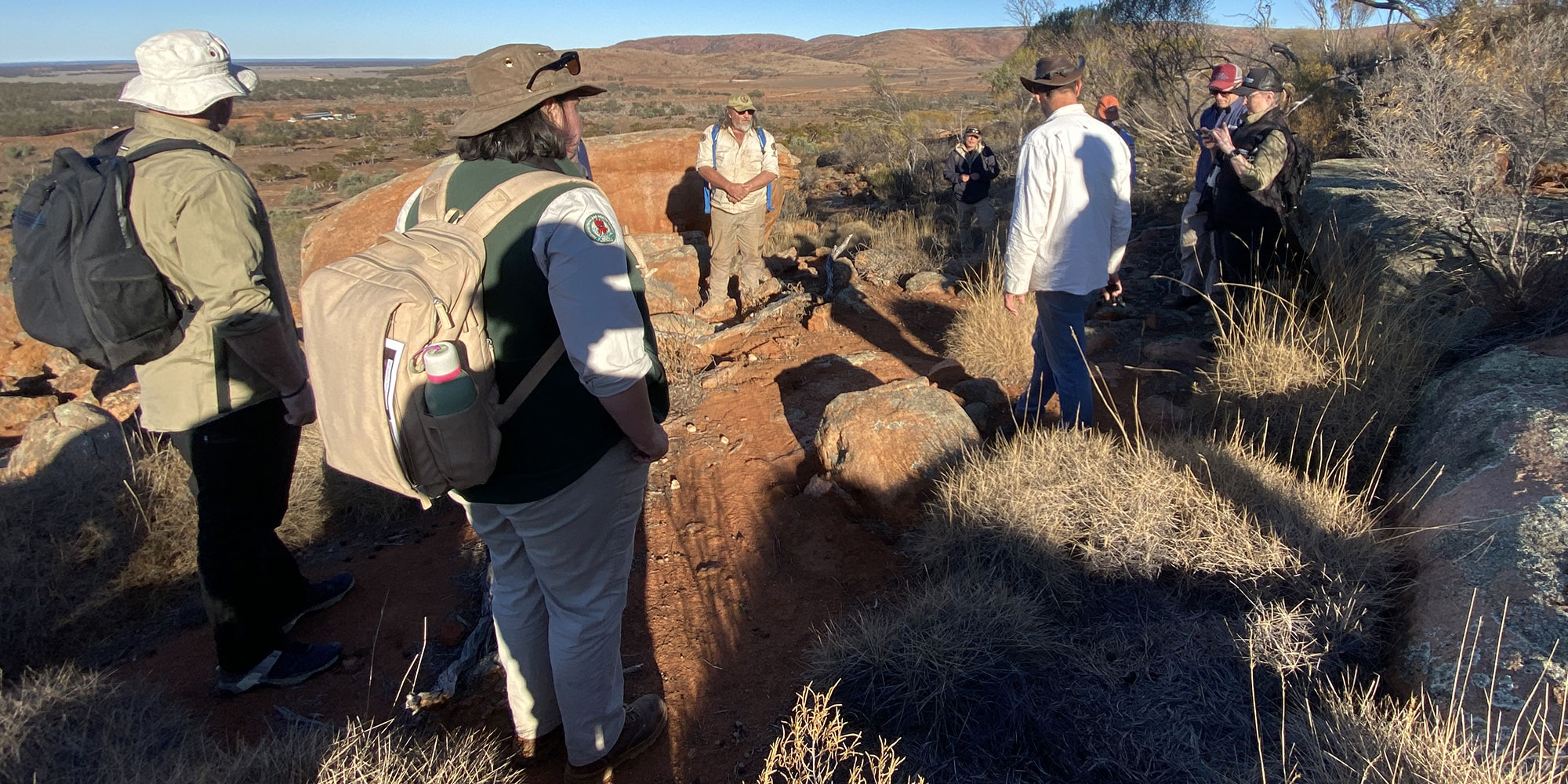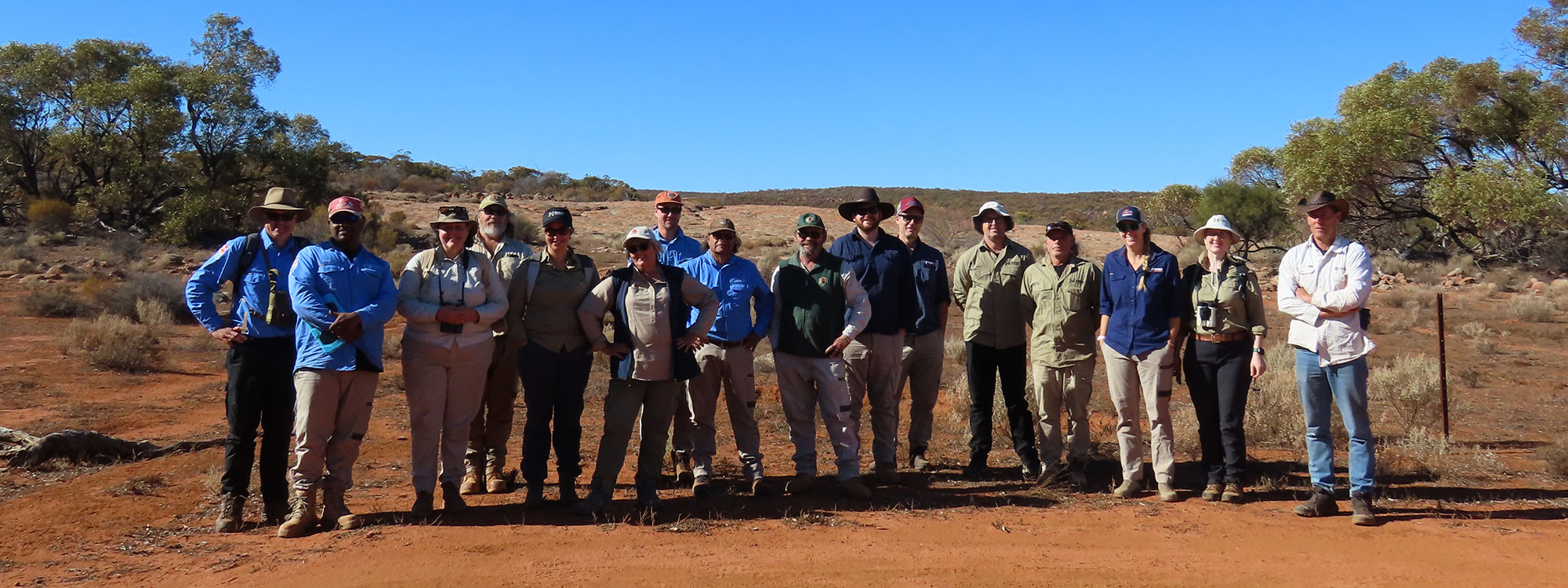The Desert Greenhood Pterostylis xerophila is a small, terrestrial orchid endemic to inland South Australia and Victoria. Little is known of its biology, ecology, distribution and abundance. It tends to be found in generally remote locations in semi-desert environments, mainly growing on rock outcrops under low shrubs, with only eight populations that are currently known, containing about 150 plants in total. Threats to the species include grazing and habitat degradation by native and introduced herbivores, disturbance, and climate change.
The Desert Greenhood is listed as Vulnerable under the Commonwealth Environment Protection and Biodiversity Conservation Act 1999; Threatened under the Victorian Flora and Fauna Guarantee Act 1988 and Vulnerable under the South Australian National Parks and Wildlife Act 1972. In 2010, the Australian Government established a national Recovery Plan for the Desert Greenhood to increase understanding of the species distribution, habitat, and threats, and establish the recovery objectives and actions necessary to ensure its long-term survival.
 Unofficial records indicate the historical presence of the Desert Greenhood in the Gawler Ranges region and on Hiltaba Nature Reserve, with the last sighting around 40 years ago. This area, with its unique ecosystem, could be a crucial habitat for the Desert Greenhood.
Unofficial records indicate the historical presence of the Desert Greenhood in the Gawler Ranges region and on Hiltaba Nature Reserve, with the last sighting around 40 years ago. This area, with its unique ecosystem, could be a crucial habitat for the Desert Greenhood.
In May 2025, the SA Arid Lands (SAAL) Landscape Board arranged a survey expedition to explore areas of habitat believed suitable for the species in the Gawler Ranges region, as part of SAAL's Discovery4Recovery project, funded by the Australian Government's Natural Heritage Trust.
The survey brought together team members from the SAAL Landscape Board, South Australian Seed Conservation Centre, National Parks and Wildlife Service South Australia, Gawler Ranges Aboriginal Corporation, Far West Coast Rangers, and Nature Foundation. Starting at Hiltaba Nature Reserve, survey leads Elisa Sparrow (SAAL) and Dan Duval (Senior Collections Officer, South Australian Seed Conservation Centre) briefed the group on the characteristics of the species, keys to identification, and habitat preferences, before embarking on a series of searches in various locations around the reserve aligned with those habitat preferences.
With the focus of the survey on identifying potential habitat areas, combined with the time of year and exceptionally dry season, the group wasn’t expecting to find Pterostylis rosettes; however, they were surprised and delighted to spot multiple rosettes hugged near the granite rocks at several sites. The sightings were a tangible example of the benefits of the long-term grazing management undertaken at Hiltaba since its establishment as a nature reserve in 2012, which has supported the recovery of a range of native vegetation.

Unfortunately, in its non-flowering state, the group were unable to tell whether the rosettes belonged to the Desert Greenhood species; they may be one of three species of Pterostylis, including—Sikh's Whiskers (Pterostylis boormanii) —which are also listed as threatened at the State level. The GPS location of each site was recorded so that the survey group can easily return in spring, when, following the rains, they are expected to flower. They can then be identified, with the results officially recorded and contributed to the recovery plan's data.
Buoyed by these initial findings, the core group continued the survey the following day at multiple sites across the Gawler Ranges National Park, which neighbours Hiltaba Nature Reserve.
Nature Foundation are proud to be involved and contributing to the survey. We look forward to sharing the spring survey results and continuing our work with the other organisations involved.

Photos:
- Top left–one of the Pterostylis rosettes found during the search by Erica Stacey.
- Top right–an example of Pterostylis xerophila by JuneN via Atlas of Living Australia.
- Middle–the survey group during the search at Hiltaba by Erica Stacey.
- Above–the suvey group at Hiltaba supplied by South Australian Arid Lands Landscape Board.